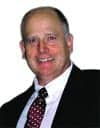The American Academy of Otolaryngology – Head and Neck Surgery Foundation (AAO-HNSF), Alexandria, Va, will issue the first comprehensive clinical guidelines to help health care practitioners identify patients with cerumen (commonly referred to as earwax) impaction.
The guidelines emphasize evidence-based management of cerumen impaction by clinicians, and inform patients of the purpose of ear wax in hearing health.
"Approximately 12 million people a year in the US.seek medical care for impacted or excessive cerumen," said Richard Rosenfeld, MD, MPH, chair of the AAO-HNSF guideline development task force. "This leads to nearly 8 million cerumen removal procedures by health care professionals. Developing practical clinical guidelines for physicians to understand the harm versus benefit profile of the intervention was essential."
The guidelines were created by a multidisciplinary panel of clinicians representing the fields of otolaryngology, audiology, family medicine, geriatrics, internal medicine, nursing, and pediatrics.
Cerumen is not really a wax but a water-soluble mixture of secretions (produced in the outer third of the ear canal), plus hair ,and dead skin, which serves a protective function for the ear. Cerumen is a natural product that should not be routinely removed unless impacted.
Cerumen impaction occurs when enough earwax accumulates to cause symptoms (pain, fullness, itching, odor, tinnitus, discharge, cough, or hearing loss), or to prevent needed assessment of the ear. The problem affects 1 in 10 children, 1 in 20 adults, and greater than one-third of the elderly and cognitively impaired.
"Unfortunately, many people feel the need to manually remove cerumen from the ears," said Peter Roland, MD, Chair of the Cerumen Impaction Guideline panel. "This can result in further impaction and other complications to the ear canal."
Any excessive cerumen normally migrates out of the ear canal automatically, assisted by motion of the jaw (eg, chewing), and carries with it dirt, dust, and other small particles in the ear canal.
Recognizing that patients may seek care from many different types of health-care providers, the guidelines are intended for all clinicians who are likely to diagnose and manage patients with cerumen impaction.
Key features of the new guidelines include:
- Cerumen is a beneficial, self-cleaning agent, with protective, lubricating (emollient), and antibacterial properties.
- Clinicians should examine patients with hearing aids for cerumen impaction because it may cause feedback, reduce sound intensity, or damage the hearing aid.
- Cerumen may cause reversible hearing loss when it blocks 80% or more of the ear canal diameter.
- Appropriate options for cerumen impaction are (1) cerumenolytic (wax-dissolving) agents, which include water, saline, and other agents of comparable efficacy, (2) irrigation or ear syringing, which is most effective when a cerumenolytic is instilled 15-30 minutes prior, and (3) manual removal with special instruments or a suction device, which is preferred for patients with narrow ear canals, eardrum perforation or tube, or immune deficiency.
- Inappropriate or harmful interventions are cotton-tipped swabs, oral jet irrigators, and ear candling.
Clinicians should assess patients at the conclusion of in-office treatment for cerumen impaction and document resolution of the impaction.
There are no proven ways to prevent cerumen impaction, but not inserting cotton-tipped swabs or other objects in the ear canal is strongly advised; individuals at high risk (eg, hearing aid users) should consider seeing a clinician every 6-12 months for routine cleaning.
"The complications from cerumen impaction can be painful and ongoing, including infections and hearing loss," Roland says. "It is hoped that these guidelines will give clinicians the tools they need to spot an issue early and avoid seriououtcomes."
Clinical Practice Guideline on Cerumen Impaction will appear as a supplement to the September 2008 issue of Otolaryngology – Head and Neck Surgery, the peer-reviewed scientific journal of AAO-HNSF and the American Academy of Otolaryngic Allergy. The guidelines will also be presented in a seminar during the 2008 AAO-HNSF annual meeting & OTO EXPO in Chicago, September 21 to 24.
Beginning September 1, the guidelines will be posted on the AAO-HNS Web site.
[Source: Eureka Alert]




